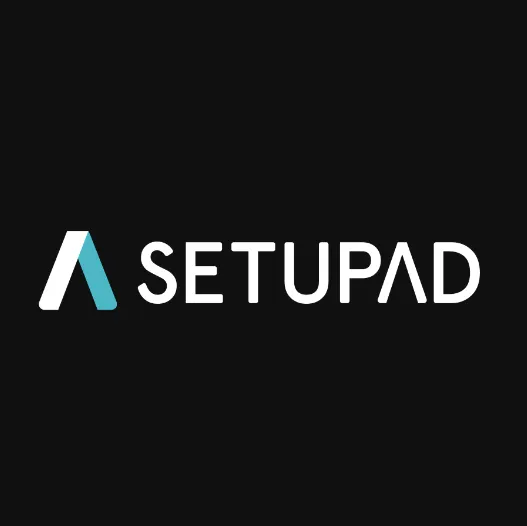The Best Plagiarism Detection Tools
In today's growing digital world of content production and distribution, originality and authenticity are a must. Be you a student, teacher, writer, or business professional, eliminating plagiarism in your work is the best guarantee of its authenticity and integrity. This article explores today's best plagiarism detection tools that will guide you on making the right decisions for meeting writing and content creation needs.
What is Plagiarism and Why is it Important to Detect?
Plagiarism is a form of action whereby someone uses ideas, expressions, or work coming from another author, ignoring proper acknowledgment, and presents them as his own. This wrongdoing will bring about a series of heavy consequences, from legal repercussions and academic damage and penalties.
Importance of Plagiarism Detection:
- Academic Integrity: It can attract heavy disciplinary actions like failing grades or even expulsion in institutes of learning if submitted plagiarized work. Detection tools ensure its proper observance among students.
- Credibility: For writers and authors, credibility and trust are also tainted when one commits plagiarism. Therefore, originality raises the authority of the author.
- Quality of work: With plagiarism detection tools making the quality of work better, they also force writers to be more critical and think differently about sources and eventually come up with more original writing.
How Plagiarism Detection Tools Benefit Users
Plagiarism detection tools offer numerous benefits:
- Identifying Unintentional Plagiarism: Even the most diligent of writers may unintentionally use phrases or ideas that are too similar to what is already existing in other works. Detection tools can capture some of the more easily overlooked issues before publication.
- Promote Proper Citation: The tools emphasize citations, so the user comes to understand why it would be important to give the real authors credibility.
- Enhancing writing skill: Many tools give feedback on style and originality of writing, hence improving the skills of the users over time.
Key Features to Look for in Plagiarism Detection Tools
When selecting a plagiarism detection tool, consider the following features:
- Complete database: A good tool should reach as much of a database of online content, including academic papers, articles, and websites, to be sure that it is able to detect accurately.
- User friendly Interface: User interface should be easy to use, uploading or copy-pasting some text should take the user with minimal effort, and others analyze it very quickly.
- Detailed Reports: Tools should be able to give the detailed reports of similarity found, sources, and a percentage of matching content.
- Real-time detection: Some tools have the facility of real time checking through which one can detect the mistakes during the writing process.
- Integration with Other Software: Tools that are integrated with other software, such as word processors or content management systems, for the purpose of easy operation.

How to Choose the Right Plagiarism Detection Tool
Choosing the right plagiarism detection tool depends on several factors:
- Evaluate Your Needs: The academic writing, professional content creation, or blogging, depending on which purpose you use the tool. So, choose the right tool according to your needs.
- Access your Budget: Review your budget Most of the tools have a free version, but premium features are paid for. It doesn't make sense to pay for it if you don't make much use of the feature.
- Check Compatibility: It must support your favorite writing platform or software.
- Read user reviews: A great way to check how well the tool works and its reliability is by reading what others have to say about it.
Best Practices for Using Plagiarism Detection Tools
To make the most of plagiarism detection tools, consider the following best practices:
- Multiple Tools: No tool is 100% accurate. Running your content through multiple tools can give you a more complete analysis.
- Check Before You Submit: Make sure to proofread before submitting or publishing for originality.
- Review Reports Thoroughly: Review the reports generated by tools. Understand why the content was flagged and revise accordingly.
Common Mistakes to Avoid When Using Plagiarism Detection Tools
While plagiarism detection tools are helpful, there are common mistakes to avoid:
- Relying on One Tool: A result of overreliance on one tool is missing instances of plagiarism as people are over reliant on that tool. A combination is generally used for better accuracy.
- Ignoring Feedback: Where you don't actually do something about the flagged content, you'll have made similar mistakes multiple times. This, therefore, is a time for learning and growth in your writing.
- Lack of Understanding in the Reports: Understand the proper reports given by the tools. Misinterpretation often leads to changes that are not necessary or overlook real problems.
Avoiding these mistakes helps you in various ways while using plagiarism detection tools.
Final Thoughts: Maintaining Originality with the Right Plagiarism Detection Tool
In today's content-driven world, using plagiarism detection tools is vital for ensuring originality and maintaining credibility. Whether it is a student, educator, or content developer, these tools give leverage to make sure that the work produced is of great quality and non-plagiarized.
This article lists tools which cater to the differing demands of casual users, academic institutions, and businesses as well-from simple checks to sophisticated solutions. Choosing the best plagiarism detection tool for your situation will further facilitate your writing process, while encouraging originality.
Thus, plagiarism detection is a way of avoiding punishment and creating a climate of authenticity and creativity in writing. You help to create a good digital atmosphere and become a reliable source of information once your content is ensured to be original.
Conclusion
With all this content creation going on, in today's age, keeping original is more vital than it has ever been. That makes plagiarism detection tools vital assets for students, educators, writers, and professionals alike to ascertain that content does not only produce high credibility but also of uniqueness.
Therefore, in utilizing these tools, you are saving both yourself and your institution or establishment from the impact of accidental plagiarism while at the same time enhancing the quality of your writings with the aspect of developing academic integrity. The seven tools that will be discussed in the paper are presented as diverse in functionality, ranging from simple checks for casual users to deep analysis for institutions.
Ultimately, Investing time in understanding and implementing right plagiarism detection tools will improve your writing of content as a publisher. Commitment to originality and proper citation will definitely place you in that category as a responsible contributor in the digital world, bringing along trust and authority to your work as a publisher. Add Plagiarism detection tools in your publishing journey and see how your writing style will show its authenticity and originality.
Plagiarism Detection Tools FAQs
Our Editors’ Pick:
Browse these amazing publisher monetization tools handpicked by our team of editors





 (1).webp)


